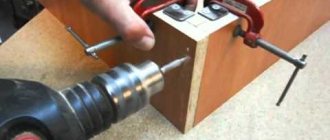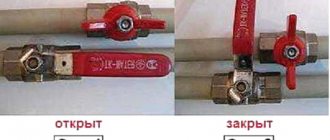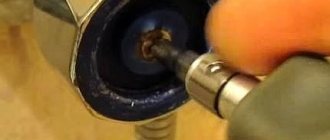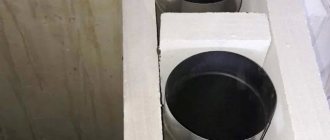Quite often, owners of automatic washing machines are alarmed by noise and vibration, especially in spin mode. This mode is sometimes accompanied by quite strong sounds and movements of the machine itself. Various knocks, noises, whistling, hissing, crunching, just a strong hum - all this is possible during the spin cycle.
Plus, vibration - from small to strong jumps of the washing machine. This article is devoted to exactly this behavior of the washing machine.
Causes of noise when spinning a washing machine
If noise appears in the machine when the drum rotates, it is necessary to determine the cause of its occurrence. The machine is designed quite simply, but here are a number of reasons why noise occurs:
- Presence of small objects inside the machine.
- Bearing wear.
- Presence of unscrewed transport bolts. When moving and transporting a machine, many often forget to unscrew the bolts, thereby preventing the normal operation of the equipment.
- Breakage or loosening of the centrifuge rotation axis.
- Poorly secured counterweights.
- Drain pump failure.
- Incorrect installation of the machine. The washing machine is installed on an unsteady surface or is not level. These are some of the most common causes of noise.
Let's look at each of the reasons in more detail.
Foreign objects inside the machine
If the machine makes a loud noise during the spin cycle and begins to vibrate or a whistle is heard, it can be assumed that some small objects from clothing pockets have gotten into the drum. According to surveys of machine repair services, this reason is very common.
When putting things into the machine, you need to check the pockets every time, as there may be objects left there that can cause damage.
At low speeds, the washer creates virtually no vibration, so everything that gets into the drum settles at the bottom. But when the washing machine goes into spin mode, it begins to vibrate strongly and foreign objects begin to get stuck between the drum and the walls of the tank. A grinding noise appears, and machine parts can rattle and whistle, which ultimately leads to the washer breaking down.
To get out all the small things that are in the tank, you need to unscrew the heating element and, sticking your hand into the tank, pull out everything that is there.
Bearing wear
One of the most important elements in the machine are bearings; with the help of these parts the drum rotates. If there is a strong hum during the spin cycle, this may indicate that the washing machine drum is loose.
In the early stages of bearing wear, the washing machine may rattle and make extraneous noise, but later, if the problem is not corrected, the machine begins to make a lot of noise, which ultimately leads to its breakdown. Bearing wear is difficult to determine, since this will only become clear when disassembling the equipment and inspecting the part.
In order to find out whether the bearing is working properly, you need to open the door of the machine and, pressing the edge of the drum, twist it. If any slipping is felt, it can be concluded that the bearing is faulty. To fix such a breakdown, it is best to contact a repair shop, but you can try to change the bearing yourself.
Bearings rarely break. This can occur mainly due to oil seal wear or corrosion. The average life of a bearing is 10 years.
Transport bolts
If extraneous noise appears in the machine during the spin cycle, this may indicate that the transport bolts were not unscrewed when installing the washing machine. For the safe transportation of washing machines, manufacturers offer the use of special fasteners that secure the drum damping springs. If you do not unscrew them immediately, the machine may crack and rattle during the washing process.
To solve this problem, you need to remove the mounting bolts that are located on the back wall of the machine.
Breakage or loosening of the centrifuge rotation axis
The consequence of this malfunction may be clicking and vibration of the washing machine during spinning. This occurs due to the loosening of the pulley nut that secures it to the drum. When spinning, the pulley begins to dangle and hits the back wall of the machine, for this reason clicks may be heard.
To fix this problem, you need to tighten the pulley nut.
Problems with counterweight
If you hear a knocking sound in the washing machine during the spin cycle, this may indicate that the counterweights are poorly attached. These parts are necessary to balance the tank on different sides and are bolted to the tank body. When the fastenings are loosened, the counterweight hits the tank, which can cause the machine to bounce and make noise.
This failure can be solved by tightening all loose connections. To do this, you need to unscrew the back cover of the machine and tighten the screws holding the counterweights together.
Drain pump failure
Another reason for the noise could be a broken drain pump. During the spin cycle, the washing machine may suddenly hum and stop working when water enters the pump. This often happens when foreign objects get into it, which can lead to breakage of the impeller or combustion of the pump.
To eliminate this kind of malfunction, you need to stop the wash, disconnect the machine from the power supply and remove the object that got into the pump.
If the pump is already broken and cannot be repaired, you will have to replace it with a new one.
Incorrect installation of the washing machine
If during installation the machine was not placed level and it wobbles when pressed, you need to level it. At high speeds, the machine may begin to creak, and centrifugal force may create an imbalance; all this will sooner or later lead to breakdown of the washing machine. This may not be easy to do, but doing so will help avoid many problems in the future.
The problem is solved by installing the machine on a flat floor and leveling it exactly level. To do this, you will have to unscrew the legs of the machine so that it does not swing.
The drum fell off
Symptoms: When turned by hand, the drum makes squeaking sounds.
If you hear grinding and squeaking noises when turning the drum, this most likely means the bearings are worn out. Rock the drum back and forth: if you feel play, it means the drum has moved from its place and a gap has formed between it and the hatch. You can, of course, still check with a spin at maximum speed, but there is a risk of completely breaking the machine.
The reasons may be in the drive belt (flying off, worn out), bearings, shaft deformation, breakage of springs or shock absorbers holding the tank. And if you can still handle the belt yourself, then it is better to entrust the repair of the rest to a professional.
DIY machine repair
To repair a machine yourself, you need to know its structure and operating principle. As a rule, repairs involve replacing old parts with new ones. When troubleshooting, you must first disconnect the machine from the power supply.
To replace parts yourself, you need to have a standard set of tools, and to repair the control board or electronics, you may also need a soldering iron.
Cleaning the drain filter
The first thing a washing machine owner can do is clean the filter. It often happens that small items of clothing or threads get there, which subsequently prevent the water from draining from the washing machine. To do this, you need to open the small cover located at the bottom of the machine and unscrew the small plastic plug using pliers.
After this, you need to clean the filter and rinse it under running water.
Cleaning the fill filter
This filter is located in the water intake hole. It can become clogged with small particles of dust or sand. To do this, you need to unscrew the inlet hose and use pliers to pull out the filter - a small plastic mesh that needs to be rinsed under water.
Replacing the heating element
If the repair involves replacing the heating element, you must first remove the back cover of the machine. Then disconnect the terminals and use a multimeter to check the element for functionality. The faulty heating element must be unscrewed using a wrench. After the old heating element is removed, you need to replace it with a new one. Be sure to install all parts in the correct order.
These are the most common types of repairs that you can easily carry out yourself. For more serious damage, it is better to contact a specialist.
The transport bolts are not unscrewed
The instructions pay special attention to the mandatory unscrewing of the transportation bolts after delivery of the equipment to the installation site. Despite this, most people forget to unscrew them, resulting in noise during operation, which is accompanied by the noise of the washing machine.
The diagram shows where the bolts are installed:
All you need to do is unscrew them and check their functionality again.
We draw your attention to the fact that you should not throw shipping bolts in the trash, as many do. If you decide to transport the washing machine from place to place, they must be screwed in, otherwise the internal mechanism may be damaged during transportation.
Precautionary measures
In order for the machine to work for a long time, you must adhere to certain rules.
- You need to be vigilant and carefully inspect things for small parts that may come off during washing and get into the tank. It is better to put such things in a special laundry bag.
- Remove money and other small items from your pockets that could damage the machine during the washing process.
- Protect the heating element from scale that forms from hard running water. To do this, you need to use water softening and descaling products.
- It is necessary to move the washing machine at least once every six months and check the serviceability of the hoses, as well as flexible wiring and pipes for damage.
- Wash and clean the drawer for powder and rinse aid. If this is not done, hardened powder particles may accumulate in the machine, which will interfere with the normal operation of the equipment.
- After each wash, leave the powder container and the machine door open. This is necessary so that the internal parts of the washer dry thoroughly.
All these recommendations will help extend the life of the washing machine and protect it from frequent breakdowns and calls to service centers.
Some types of repairs can be carried out independently, but still, if the breakdown is serious, it is best to contact a service center and call a specialist to your home.
Foreign objects
In fact, a very common reason that is encountered in most cases. You have not taken out various kinds of small items (for example, coins) from your pockets, or the metal fasteners on your clothes are hitting the drum, causing the washing machine to make a lot of noise when washing. This reason can be determined by the characteristic ringing beats on the drum.
It’s good if all the little things remain inside the drum, but if foreign objects are between the tank and the drum, you’ll have to do a little work. You need to remove the heating element and take out all the items through the resulting hole, and then put the spare parts back. In some models, all small things can fall into a special sump where a filter is installed. In this case, if the washing machine makes noise during washing, you need to find the sump cover (usually it is on the front, closed with a small door), unscrew it and remove all the trapped objects.
Trouble-shooting
If noise and hum appear during draining of water, and independent actions do not lead to its elimination, you need to contact professional specialists. FixWosher specialists will quickly and efficiently repair your equipment at home in Moscow and the Moscow region. Before repairs, a full diagnosis of the machine will be carried out, and the cost of services will depend on the identified faults and the complexity of the breakdown. We repair washing machines Samsung, Indesit, Bosch, Candy, LG, Ardo, Zanussi, Electrolux, Beko and others.
You can leave a request for a technician to visit you on the website or by calling 8(495)228-42-92. The company works from 7:00 to 23:00 without days off or breaks.
Source
The noisiest stage
The question most often arises: “Why does the washing machine hum when draining water?” Unsurprisingly, this stage is indeed the noisiest. Because during its passage the following phenomena are observed:
- The drain valve opens.
- The pump turns on.
- Water is flowing.
Remember! Not a single pump operates silently, not a single stream of water can fail to gurgle or gurgle! The only question is how loud it is. If your washing machine has been noisy since you purchased it, then this is a design problem. It’s another matter if the noise level suddenly doubles for you. That's when you can start to worry.
It is worth mentioning the stages in which draining the water is an additional action - rinsing and squeezing. In this case, the rotation of the drum also affects the noise. It should happen as quietly as possible. If this is not the case, then you should take care and eliminate the cause.
There is another difference between these stages. If draining water is accompanied by a hum, which is typical for the operation of a hydraulic system, then spinning and rinsing are accompanied by shaking and vibration. What gives rise to sounds of a different nature - they are rhythmic, percussive.
Other troubleshooting options
Have you decided what the problem is for the normal functioning of a machine that makes noise during the spin cycle? Re-inspect. What other symptoms did you see? After all, it is not only noise that indicates a failed part of the device. Start looking for additional reasons by looking at recently machine-washed clothes to see if there are stains on the items after washing or if you might notice anything else unusual.
If there are noticeable stains on freshly washed clothes, it is worth thinking about the reasons and possible speedy repairs. Second symptom: the holes are closed (machine lid, filter), but there is dripping from below. Water should not flow from a closed machine. If this happens, a clogged oil seal is to blame. When the drum breaks down noticeably prevents it from spinning, this is a sign that again points to the bearings, the washing function is impaired.
Incorrect installation
An equally simple reason for loud operation is improper installation of the washing machine. Even a slight misalignment can cause vibration, which occurs when equipment operates at high speeds. As a result, you hear an unpleasant sound, which can easily be removed by twisting the legs to a strictly horizontal installation level.
The correctness of the work done can be checked using a building level. It is the crooked housing that causes the washing machine to vibrate and bounce on the floor, causing it to be heard making noise.










